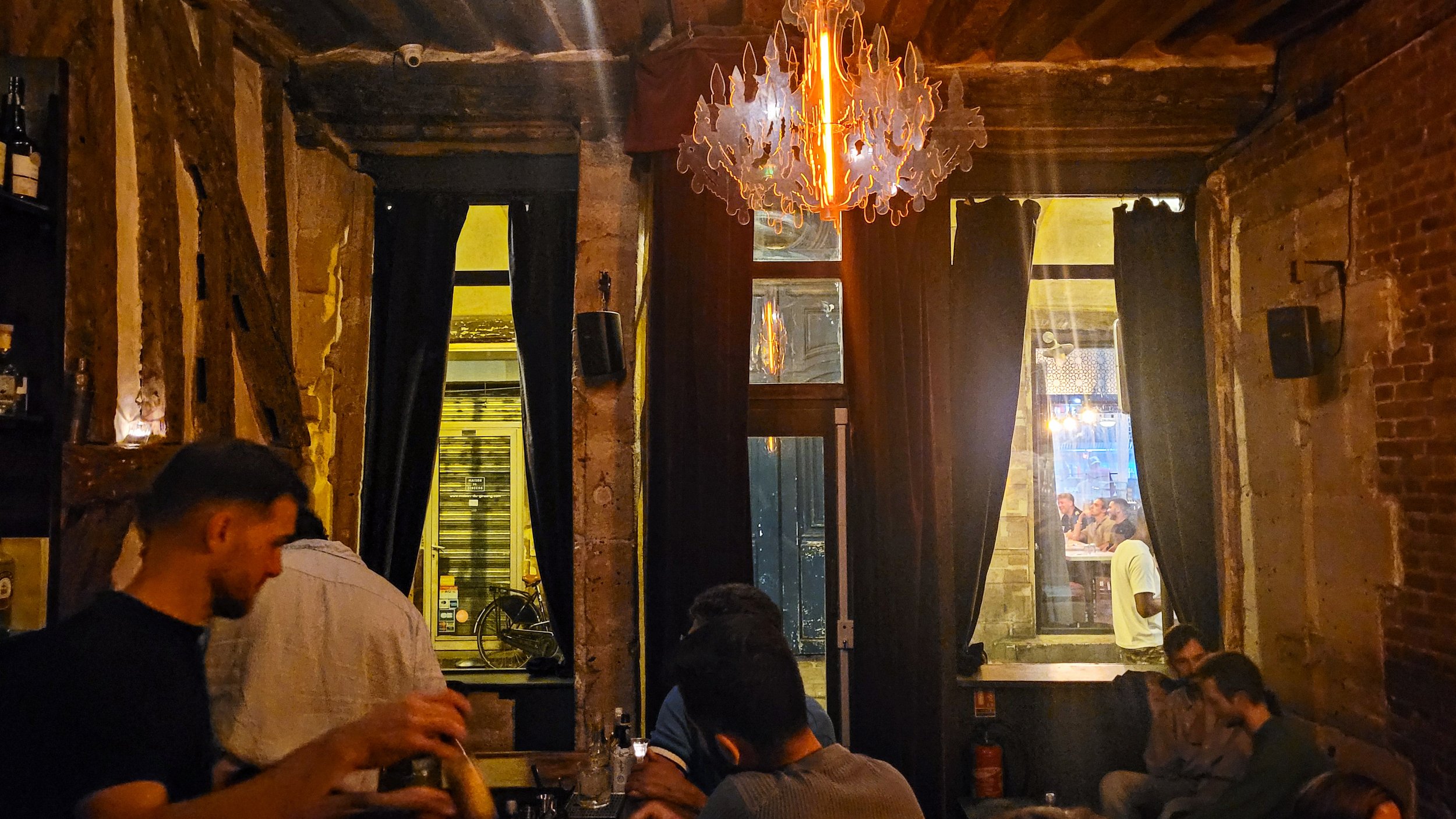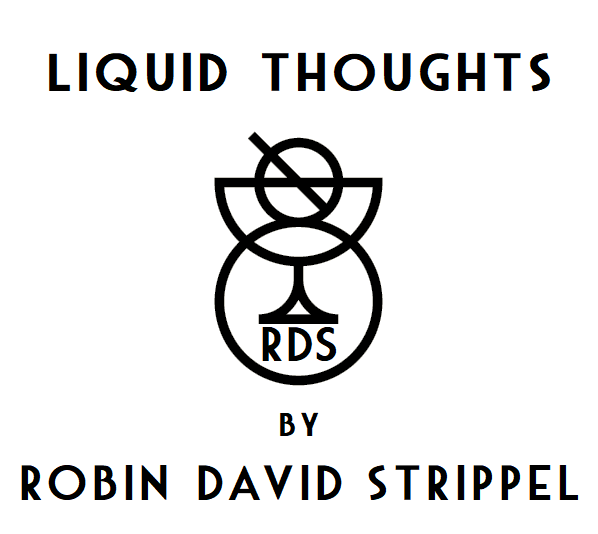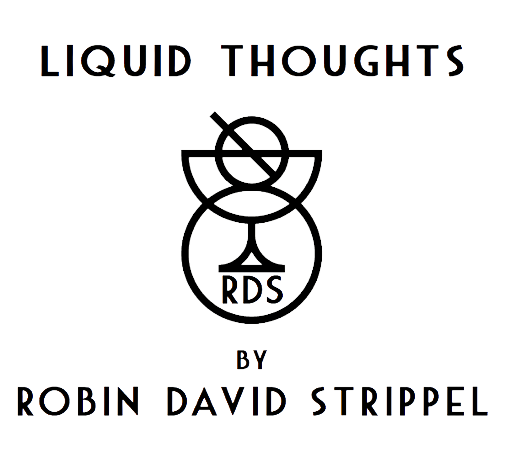#42 | Experimental Cocktail Club, Paris, France
Last Visit: Fall 2023
Today we're talking about my last visit to one of Europe's epicenters of the well-known bar renaissance of the mid-2000s, Experimental Cocktail Club in Paris. What Pegu Club, Milk & Honey or Jeffrey Morgenthaler and his bar were to the UK and the US, ECC was to Paris and, indirectly, to other parts of mainland Europe at least.
But I don't want this to become a several pages long history lesson, at least not within a typical bar review, so I'll try to keep it short.
As you can read in more detail in the recently reviewed ECC book, it was founded in 2007 by three school friends and had a huge influence simply because there were virtually no modern cocktail bars (with the emphasis on “modern” as well as “cocktail”) in Paris at the time. Of course, this was initially still happening inside a certain bubble; not everyone was immediately open to such new, liquid experiments. Success came though, but it would be many, many years before we find a Paris like today, full of dozens and dozens of contemporary and interesting cocktail bars.
In all those years, the ECC - riding the typical successful wave of being the “first” - also opened quite a few new locations, in Asia or the famous ECC Chinatown in London and more. Some have closed, while others have opened relatively recently. The Parisian “empire” currently comprises 6 bars, some of which are now in cooperation with hotels. And one of them not yet opened at the time of writing, a fascinating, elaborate project right next to the famous Flatiron Building in NYC, together with Nico de Soto.
But let's finally get back to its Parisian origins. Very centrally located in the second arrondissement, slightly west of the city's main bar bubble, the ECC looks relatively inconspicuous from the outside, like most Parisian bars. To this day, I'm not sure how much of this is due to a possible historic preservation law by the city of Paris (probably not in this case), how much is due to a certain Parisian style of understatement or whether I'm overlooking something else entirely. You almost always find bars that somewhat look like speakeasies, but aren't really. You'll always have a small plaque here or a sign there, but always very discreet, rarely do you have entire awnings or lettering on the wall with names, as is often the case in Germany for example.
Inside, you could imagine being in the middle of New York or London, brick walls, everything a bit “rough” (or “authentic”, as one would say today), an old-school wooden bar on the right and cozy, large armchairs everywhere. On the other hand, there's also some great, typical Parisian half-timbering from those small, narrow houses that shine through, with dark wooden pillars and planks. There is a reason why, when researching, you come across fascinating “historical” reports on blogs from 2012 or even older, which recommend their New York crowd to definitely stop by here in Paris because you will feel right at home (as in "just like in NYC bars").


The menu (see below) is also a bit of a trip back in time in the sense of typically simple as it always was back then. Why create something elaborately new when it works and fits in well with the old school setting? Plain, thicker paper, folded, the 10–12 signatures changing every few months on the left, two beers, 2–3 champagnes on the right, a reference to a general price for non-alcoholic cocktails and the changing barrel-aged drink, done. Nothing elaborate, no fancy design concept, almost unusual these days. Slightly unfortunate: No food either, which would actually fit in perfectly here with some soul food style bar snacks. Even the glasses are an example of the era. Of course, there are also some contemporary Spiegelau glasses (e.g. the nosing glasses), but always the timeless, simple ones, nothing loud or expressive. You notice in many of these details that everything could have come straight out of a 2010 YouTube video from an NYC bar, somehow quite likeable and giving you cozy vibes in 2024.
Over the years and 3–4 visits, the staff have been more than just pleasant, whether waiters or bartenders, open, always up for a joke, good at giving advice and, by Parisian standards, with top-notch English. Also because it is of course still one of the best addresses for international bartenders with a few years of initial experience to take the next step. This time I was particularly lucky and found myself in front of Dario, a bartender from Italy who had also been mixing in Maastricht for 3 years, but had also lived in Germany and, despite the bar being a good 2/3 full, talked to me frequently and freely about all sorts of things.
While I was still going through the menu and getting some advice, I noticed a few bottles on the top shelf that looked more than familiar. On the one hand, the unmistakable label and bottle shape of the NumberOne single casks from Karuizawa and the great old-school label of the Yoichi Vintage range, of which I had already had the 1988 a year earlier. Dario, quite happy with having a little spirit connoisseur and whisky friend in front of him (he himself was hoping to visit Nikka in Japan via ECC), quickly researched the price upon request, which was more than fair compared to some whisky bars (especially in Paris) and so both were due this evening.
This in turn led to a lot of envy from my biggest whisky friend back home in Cologne, with whom I particularly enjoy tasting these rare Japanese whiskies together. At his request (via WhatsApp), I asked nicely if I could buy a small sample to take away, I even had matching sample bottles with me (because of one of those Parisian whisky bars). Unfortunately, this was not possible, quite understandably, as the bottles are of course an important attraction for visitors and there is always a certain risk in giving away samples. But once again, I was thrilled at how long Dario went to discuss the possibility for a fellow whisky fan in a conversation with his boss.
Both whiskies were convincing across the board and even received the same 92 points from me in my whisky database. The Karuizawa 1979 from cask 8187 was specially bottled for La Maison du Whisky in Paris (more on this in the next Paris review) and was like an ancient cognac in the nose and mouth. Dried fruit, manuka honey, pickled plums, apricots and peaches, humidor, fine cigars, oiled leather - I could go on and on. The younger Yoichi 1990, on the other hand, was somewhat more impulsive in comparison, but still wonderfully balanced and intense, dark chocolate and ume plum, slightly alcoholic despite “only” 50%, sour cherry, menthol, hearty, shoe polish, black cherry, licorice, cola nut, as well as the well-known light smoky note of Yoichi.
Oolongation
| Laphroaig 10yo
| Crème de Pêche de Vignes Merlet
| Oolong Kombucha
| Scrappy’s Firewater Bitters
When you first hear peach, tea and Islay whisky, one of the most intense you can find in the 40-46% range, you would bet all your money that the whisky will end up dominating. But no! It is mainly the exciting and intense Kombucha that plays with the peach, as well as the rather spicy chili note of Scrappy's Habanero tincture. Funnily enough, the fermented Kombucha notes create the illusion that the peach is more of a mango, and that together with the chili makes the whole drink seem even more exotic than one might initially expect. All of this is accompanied by a rather subtle backbone with a little malt and a hint of earthy smoke. All in all, an exciting drink that plays a little with your expectations. It was expected to be aroma-intensive of course, but in the end it is less so because of the Laphroaig. Would also be great for a food pairing.
La Maison du Glass
| Glasshouse Whisky
| Suze
| Chartreuse Jaune
| Lime
| Eggwhite
| Scrappy’s Cardamom Bitters
An interesting whisky choice, Glasshouse is a lighter blended scotch, created specifically to be used in fresher whisky cocktails such as a whisky highball, with a more tropical fruity flavor profile of pineapple and banana. So its use here makes perfect sense, otherwise the drink initially reads more like a creation for a gin base or tequila blanco, leaving room for the herbal notes. But a whisky on the lighter, fruity side can of course be a good substitute here. Indeed, it worked out great, almost the highlight at first: a really perfect egg white texture, smooth and voluminous like nothing else, great shaking technique. This was followed by a beautiful balance of the Suze's intense gentian and the quite complex freshness of the citrus and exotic notes of the Glasshouse whisky and lime. Velvety, fresh and fruity, despite the whisky and 3 herbal elements, a well-rounded, successful sour.
The phrase may sound a little cliché these days, but the highlight of the Experimental Cocktail Club, on previous visits over almost 10 years and especially this time, were the people. In fact, the people in front of and behind the bar. The atmosphere here was always fantastic in terms of the guest crowd, relaxed but never too loud, just people who wanted to have a great evening, fun, good conversations and equally good drinks (ok, another cliché sentence, I’ll stop now). The service was just as open and fun, even if Dario was of course the cherry on top as the host. From discussions about my choice of whisky and my opinion of those, to deeper conversations about his bar career and goals, the Düsseldorf carnival back in Germany (yes, really), always with fun and humor, all that in no more than an hour and a half. The bar is these days perhaps a little more classic in comparison to newer representatives such as Le Syndicat or Danico. But even after so much history and other bars that are perhaps more aggressively pushing a very postmodern interpretation of cocktails and bar design, you can't help but be in a good mood at ECC and enjoy every visit with a little time travel factor.
/rds
The menu at time of visit (click for full size):










